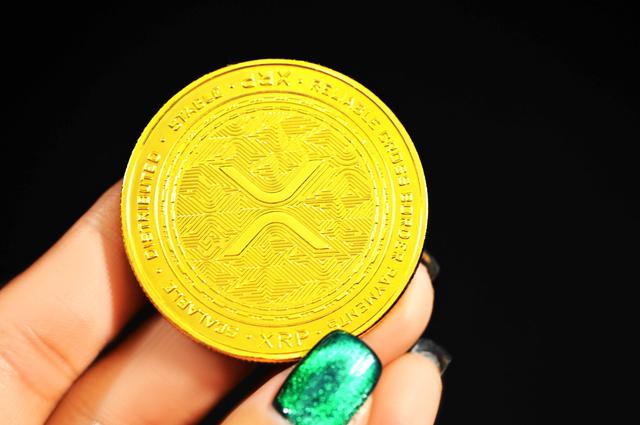Ripple, an American enterprise blockchain and crypto solutions company, has set aside $100m to accelerate carbon removal activities to limit the rise of global temperature to 1.5 degrees Celsius.
The California-headquartered company recently closed a private buy-back of stocks it sold during its December 2019 Series Cfunding round Funding Round Startups look to raise capital can participate in a funding round. These refers to the various rounds of funding that occur upon proof of concept, customer base growth, and the probability of success. While they are various types of funding rounds, the most commonly seen in startups include the following funding rounds: Seed, Series A Fundraising, Series B Fundraising, and Series C Fundraising. In order for a funding round to take place, a valuation must be performed by analysts for the business in question. Common factors that analysts use for valuations include market size, risk, management, and historical transparency. Types of Funding RoundsThe seed funding round officially kicks off a startup’s equity fundraising process. Used by startups to finance the beginning stages of its business, some proceeds of seed funding may go towards product development and market research.Common investors include angel investors, friends, family, and venture capital firms.Companies that emerge out of the seed funding round that has gone on to prove its ability to build a consumer base while generating a regularly occurring revenue can participate in Series A Fundraising.Businesses that wish to opt-in to a Series A funding round must also possess a strong business strategy to illustrate how it will continue to manifest into a successful business. Series B Fundraising are available for companies that are seeking to depart the development stage that has valuations between $30 million to $60 million.Companies that go on to make it to Series C funding rounds are considerably successful where the aim is to scale a company as efficiently and quickly as possible. Typical investors include investment banks, private equity firms, and hedge funds. For many investors, monitoring how a startup goes through funding rounds is a tactical strategy for securing high-probability investments. Startups look to raise capital can participate in a funding round. These refers to the various rounds of funding that occur upon proof of concept, customer base growth, and the probability of success. While they are various types of funding rounds, the most commonly seen in startups include the following funding rounds: Seed, Series A Fundraising, Series B Fundraising, and Series C Fundraising. In order for a funding round to take place, a valuation must be performed by analysts for the business in question. Common factors that analysts use for valuations include market size, risk, management, and historical transparency. Types of Funding RoundsThe seed funding round officially kicks off a startup’s equity fundraising process. Used by startups to finance the beginning stages of its business, some proceeds of seed funding may go towards product development and market research.Common investors include angel investors, friends, family, and venture capital firms.Companies that emerge out of the seed funding round that has gone on to prove its ability to build a consumer base while generating a regularly occurring revenue can participate in Series A Fundraising.Businesses that wish to opt-in to a Series A funding round must also possess a strong business strategy to illustrate how it will continue to manifest into a successful business. Series B Fundraising are available for companies that are seeking to depart the development stage that has valuations between $30 million to $60 million.Companies that go on to make it to Series C funding rounds are considerably successful where the aim is to scale a company as efficiently and quickly as possible. Typical investors include investment banks, private equity firms, and hedge funds. For many investors, monitoring how a startup goes through funding rounds is a tactical strategy for securing high-probability investments.Read this Term, thereby putting the company’s valuation at $15 billion.
According to the company, the new fund will help to modernize carbon markets through investments in innovative carbon removal companies and climate-focused financial technology companies.
Ripple announced the investment on Thursday in a press statement.
“Ripple will also build a portfolio of additive, long-term, nature and science-based carbon credits, some of which will be used to meet its own commitment to achieve net zero by 2030 or sooner,” the company said in the statement.
It added, “In addition, the funding will continue to support new functionality and developer tools that enable carbon credittokenization Tokenization Tokenization represents the process of substituting a sensitive data element with a non-sensitive equivalent, i.e. token, which bears no extrinsic or exploitable meaning or value. In essence, the rights to the ownership of an asset are converted into a digital token. Tokenization can be used to own an entire unit of an asset. For example, one token that represents the ownership of a piece of real estate or to split ownership of a single unity of an asset such as 200,000 tokens, each one representing 0.05% of a piece of real estate.Tokenization has been described as the future of ownership. Some analysts believe that one day, tokenized systems will completely replace paper certification-based ownership systems. However, blockchain-based ownership records are not currently recognized as legally valid in most places in the world. Tokenization combined with blockchain is quite powerful, while also being useful in terms of PCI data security. When a token is issued on a blockchain, the blockchain records the issuance and maintains a ledger of every single movement of that token.A notable feature of blockchain with regards to tokens is that it controls for the double-spend issue. Prior to the innovation of blockchain, any digital asset such as an image, or document, could be copied an infinite number of times by anyone with access to it. Exploring Possibilities of Asset TokenizationBy overcoming the double-spend problem, blockchain can now facilitate the use of tokens that can be used in a similar way to casino chips or banknotes. This has opened up tokens as a vehicle for investment in multiple projects.Asset tokenization reflects the next evolution in tokenization. Tokenizing an asset involves issuing a digital token on a blockchain. As such, the token represents an underlying tangible or intangible asset. In this way, the economic value of the asset is conferred to the token. The ownership of the asset is represented by ownership of the token on the blockchain. Tokenization represents the process of substituting a sensitive data element with a non-sensitive equivalent, i.e. token, which bears no extrinsic or exploitable meaning or value. In essence, the rights to the ownership of an asset are converted into a digital token. Tokenization can be used to own an entire unit of an asset. For example, one token that represents the ownership of a piece of real estate or to split ownership of a single unity of an asset such as 200,000 tokens, each one representing 0.05% of a piece of real estate.Tokenization has been described as the future of ownership. Some analysts believe that one day, tokenized systems will completely replace paper certification-based ownership systems. However, blockchain-based ownership records are not currently recognized as legally valid in most places in the world. Tokenization combined with blockchain is quite powerful, while also being useful in terms of PCI data security. When a token is issued on a blockchain, the blockchain records the issuance and maintains a ledger of every single movement of that token.A notable feature of blockchain with regards to tokens is that it controls for the double-spend issue. Prior to the innovation of blockchain, any digital asset such as an image, or document, could be copied an infinite number of times by anyone with access to it. Exploring Possibilities of Asset TokenizationBy overcoming the double-spend problem, blockchain can now facilitate the use of tokens that can be used in a similar way to casino chips or banknotes. This has opened up tokens as a vehicle for investment in multiple projects.Asset tokenization reflects the next evolution in tokenization. Tokenizing an asset involves issuing a digital token on a blockchain. As such, the token represents an underlying tangible or intangible asset. In this way, the economic value of the asset is conferred to the token. The ownership of the asset is represented by ownership of the token on the blockchain.Read this Term as core non-fungible tokens (NFTs) on the XRP Ledger (XRPL)."

The Focus of the Fund
Ripple said the $100 million will be used to focus on key initiatives as part of its commitment to the sustainability of our planet.
The tech company listed some of these initiatives to include building a portfolio of high-quality, existing and future carbon credits to help capitalize on the most impactful and scalable carbon removal methodologies and projects.
In addition, the fund will be used to invest in innovative carbon-removal technology companies and market makers utilizing blockchain, crypto and other financial technology to accelerate supply and unlock exponential value for both buyers and suppliers.
ADVERTISEMENTAdditionally, the amount will also be used to support new functionality and fund developer tools for creators and developers focusing on carbon markets solutions and carbon credit NFTs on the XRPL.
With the fund, Ripple intends to continue its partnership with top climate and conservation organizations to develop new methodologies for carbon removal.
This will work alongside distributed stakeholder-led governance models, thereby helping to create greater fairness, revenue, and equity for suppliers, especially in developing economies, the company said.
‘A Global Call to Action’
According to Brad Garlinghouse, the Chief Executive Officer of Ripple, blockchain and crypto can play a catalytic role in allowing carbon markets to reach their full potential by “bringing more liquidity and traceability to a fragmented, complex market.”
“Our $100 million commitment is a direct response to the global call to action for companies to help address climate change by deploying resources, including innovative technology, strategic capital and talent,” Garlinghouse said.
“While reducing emissions and transitioning to a low-carbon future are paramount, carbon markets are also an important tool for meeting climate goals,” he added.
Meanwhile, in a major effort to increase developments on the XRP Ledger (XRPL), Ripple in March committed one billion XRP to facilitate new use cases on the XRPL, a decentralized public blockchain.
Ripple earlier this month announced its partnership with FINCI, an online global money transfer provider based in Lithuania, to power business-to-business payments through RippleNet’s on-demand liquidity service which leverages XRP for crypto-enabled efficient cross-border payments.




